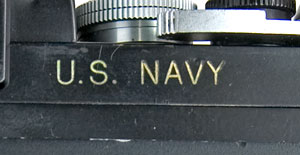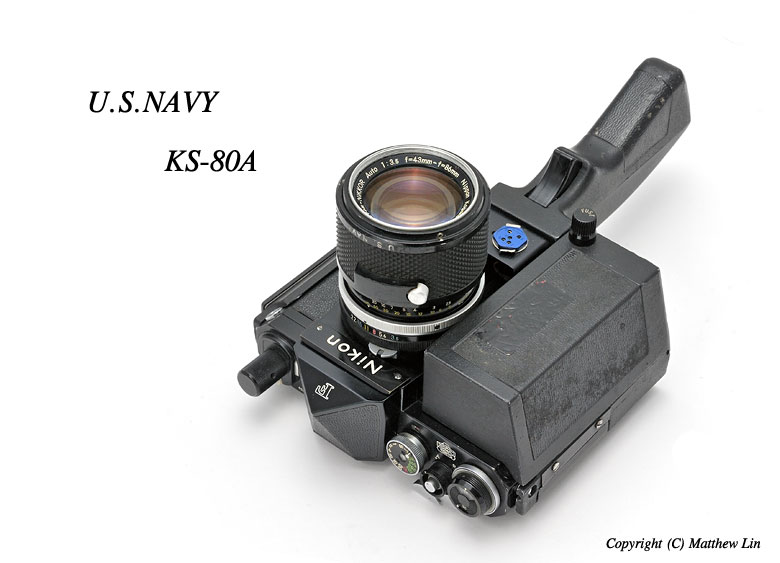 |
|||||||||||||||||||
|
This specially modified Nikon F was designed to be used by US Navy pilots in the 60's. It was estimated only several hundreds units were produced. Most of them did not survive the brutal military usage. A complete unit with motor drive, pistol grip, battery pack, and the charger is extremely rare!!! You are more likely to see just the US Navy F body without the motor drive assembly. Occasionally, you may also stumble upon the detached motor drive unit or the pistol grip, but often without the camera body, and almost certainly without the battery pack housing. |
|||||||||||||||||||
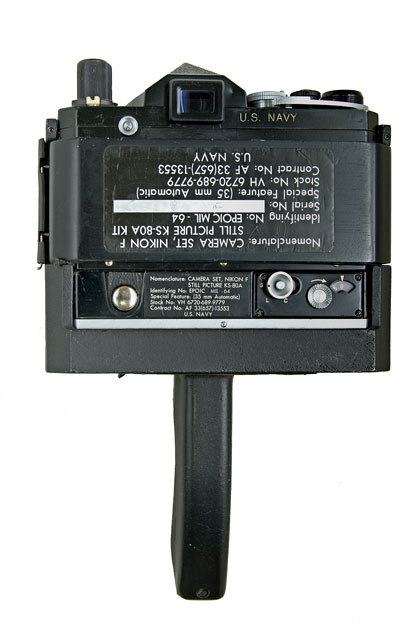 |
|||||||||||||||||||
| Looking at the back, you will see the "U.S. NAVY" engraving just below the film advance lever and the two prominent military contract ID tags. I have no idea why the larger contract ID tag on this KS-80A of mine is upside down!? (Before you suggest it, no, the removable back door doesn't fit the other way round!) Perhaps, it was just the result of the sloppiness of EPOI (Ehrenreich Photo-Optical Industries), the then US importer of Nikon who did the modification at the time? |
|||||||||||||||||||
|
|
|||||||||||||||||||
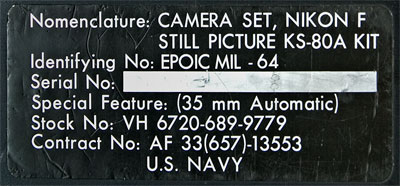 |
|||||||||||||||||||
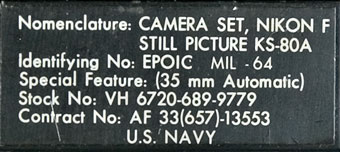 |
|||||||||||||||||||
| Only the earliest type KS-80A has this contract ID on the removable back. The later ones come with either a smooth or crinkled black paint back without the contract ID. | Some ID tag on the motor drive, like this one, does not have space for Serial No. |
||||||||||||||||||
Information about any Nikon military camera is scarce these days. Although KS-80A did originally come with a set of operator manual, they are actually harder to find than the camera itself ! The photos below are downloaded from an online auction site and digitally enhanced. They are shared here for non-commerical use. |
|||||||||||||||||||
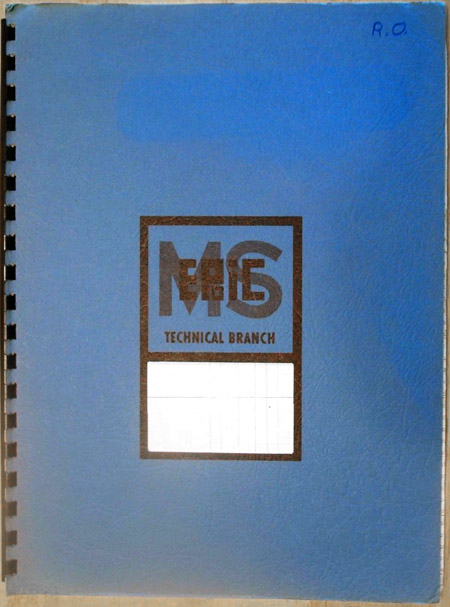 |
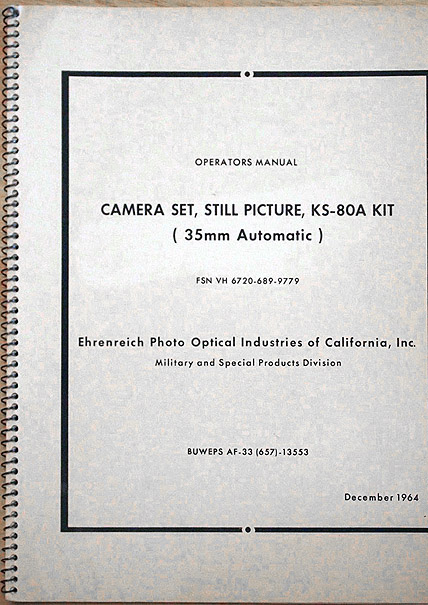 |
||||||||||||||||||
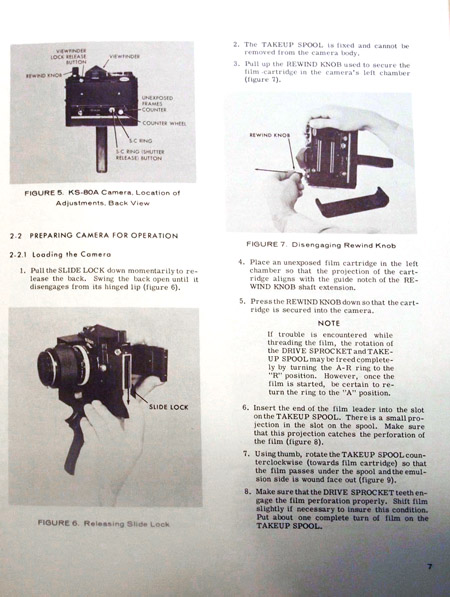 |
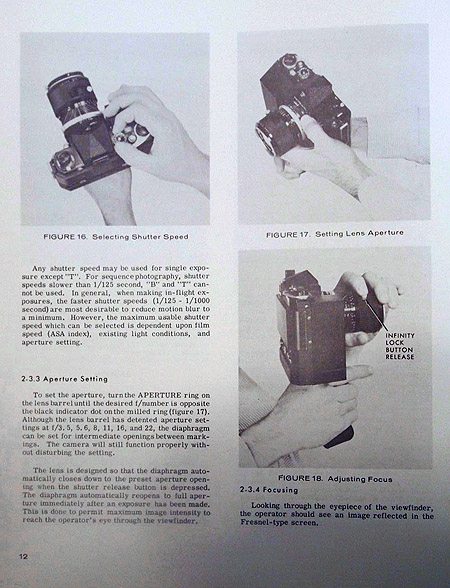 |
||||||||||||||||||
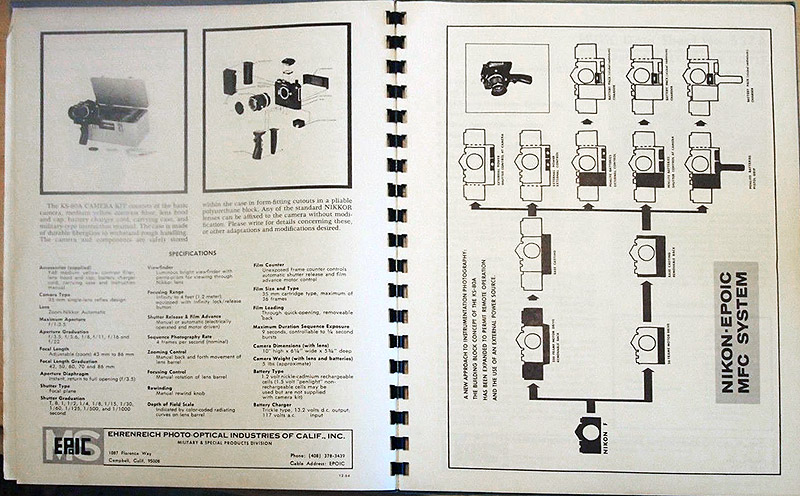 |
|||||||||||||||||||
| Navy Training Course book for photographer pictured below also provide some sketchy information about this camera. | |||||||||||||||||||
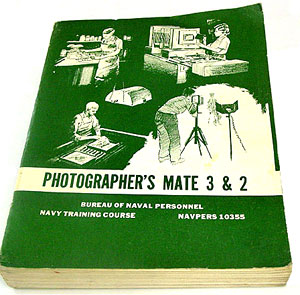 |
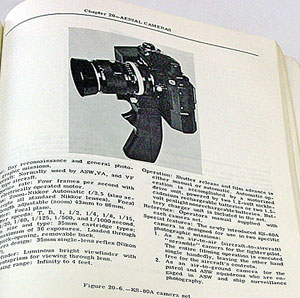 |
||||||||||||||||||
Quoted from the book, this camera was designed for use in two specific missions: 1) As an air-to-air (aircraft-to-aircraft) "scramble" camera for the fighter pilot. The entire filming operation is executed single-handedly, leaving the other hand free for the aircraft's controls. 2) As an air-to-ground camera for the patrol and ASW squadrons who are engaged in ASW and ship surveillance photography. (ASW stands for Anti-submarine warfare) KS-80A has serveral modifications to enable single hand operation. The shutter release and film advancing are done by an over-sized trigger on the pistol grip. When the trigger is half-depressed, it fires a single shot, and when fully depressed it shoots continuously at 4 frames per second. Some of the KS-80A like the one shown here also have a very tall film rewind knob. This is all clearly designed for pilots who wears gloves. The standard finder for KS-80A is the eyelevel prism finder, although I personally think an Action Finder, with its long eye relief, would have made more sense for viewing through the helmet's visor. As a standard package, it also comes equiped with a specially modified 43-86mm zoom. There was no autofocus at that era, the focusing is taken care of by a mechanism that locks the focus at infinity while maintaing the zooming capability. "US NAVY" is engraved on the rim near the front end of the focus ring. |
|||||||||||||||||||
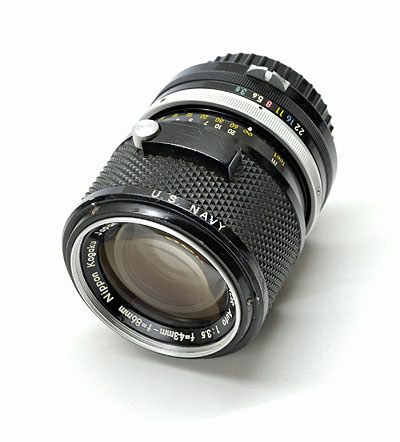 |
|||||||||||||||||||
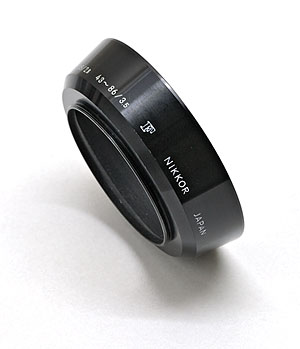 |
|||||||||||||||||||
Shown above is the dedicated lens hood. |
|||||||||||||||||||
Shown on the right is a warning sticker on the battery pack housing. It says: WARNING WHEN NOT IN USE CAMERA MUST BE KEPT ON CHARGE This sticker is normally in red and white. This one is however blackened. There is another similar sticker on the base of the motor drive assembly too. |
|||||||||||||||||||
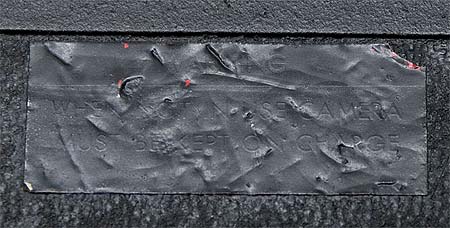 |
|||||||||||||||||||
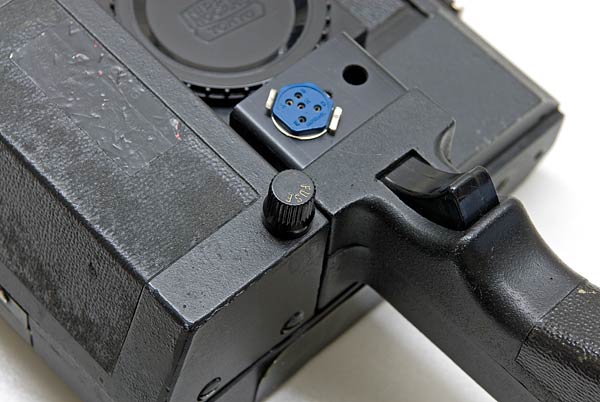 |
|||||||||||||||||||
Apart from the original rechargable Ni-Cad batteries which were restricted military items and the charging unit itself, I believe the battery pack housing, in particular the fuse cap, is the most difficult part to find in this camera set. It is probably the way this fuse cap protudes, most of them were either lost or simply broken off. From the close up photo above, you can see how solid the metal cradle is. The whole camera feels really heavy even without the batteries!! |
|||||||||||||||||||
There are many small varations to this KS -80A. The later models are called KS-81A, although the camera is still basically the same. You can also take a look at Stephen Gandy's camera site for a more detailed descriptions of different varitaions. |
|||||||||||||||||||
Updated on 5 Feb 2017 |
|||||||||||||||||||
